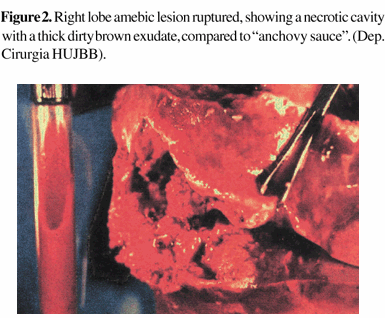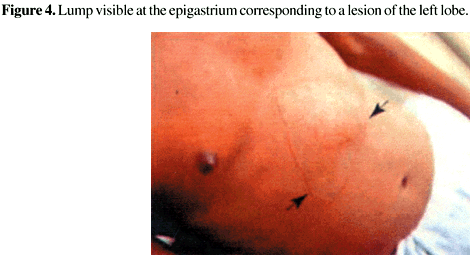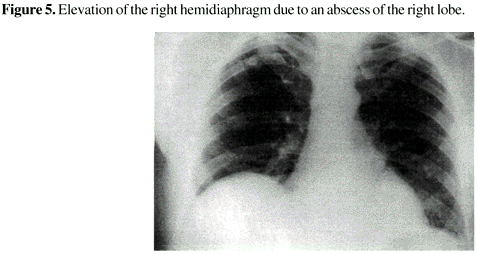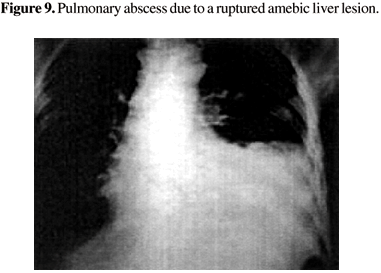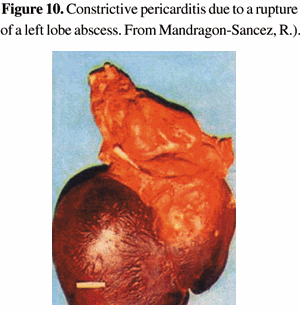Amebiasis can be considered the most aggressive disease of the human intestine, responsible in its invasive form for clinical syndromes, ranging from the classic dysentery of acute colitis to extra-intestinal disease, with emphasis on hepatic amebiasis, unsuitably named amebic liver abscess. Found worldwide, with a high incidence in India, tropical regions of Africa, Mexico and other areas of Central America, it has been frequently reported in Amazonia. The trophozoite reaches the liver through the portal system, provoking enzymatic focal necrosis of hepatocytes and multiple micro-abscesses that coalesce to develop a single lesion whose central cavity contains a homogeneous thick liquid, with typically reddish brown and yellow color similar to "anchovy paste". Right upper quadrant pain, fever and hepatomegaly are the predominant symptoms of hepatic amebiasis. Jaundice is reported in cases with multiple lesions or a very large abscess, and it affects the prognosis adversely. Besides chest radiography, ultrasonography and computerized tomography have brought remarkable contributions to the diagnosis of hepatic abscesses. The conclusive diagnosis is made however by the finding of Entamoeba histolytica trophozoites in the pus and by the detection of serum antibodies to the amoeba. During the evolution of hepatic amebiasis, in spite of the availability of highly effective drugs, some important complications may occur with regularity and are a result of local perforation with extension into the pleural and pericardium cavities, causing pulmonary abscesses and purulent pericarditis, respectively The ruptures into the abdominal cavity may lead to subphrenic abscesses and peritonitis. The treatment of hepatic amebiasis is made by medical therapy, with metronidazole as the initial drug, followed by a luminal amebicide. In patients with large abscesses, showing signs of imminent rupture, and especially those who do not respond to medical treatment, a percutaneous drainage must be performed with either ultrasound or computerized tomography guidance. Surgical drainage by laparotomy is reserved to patients with secondary infections.
Entamoeba histolytica; hepatic ameabiasis


